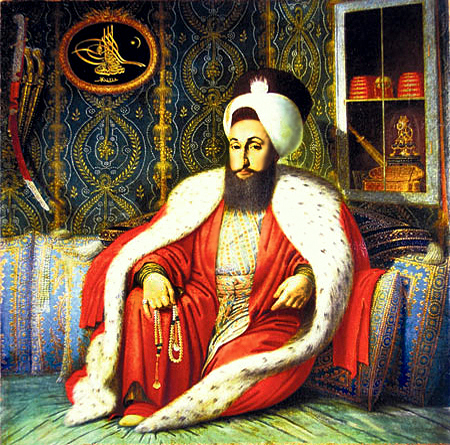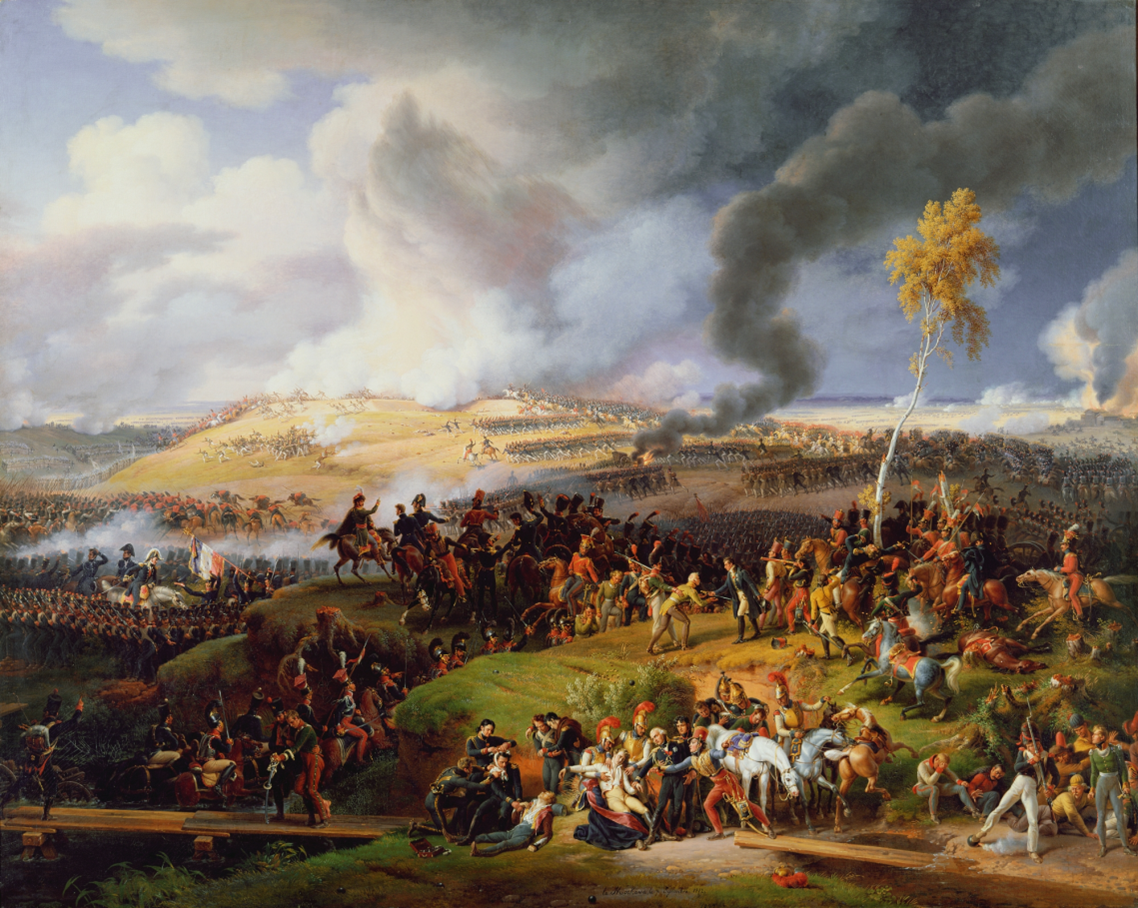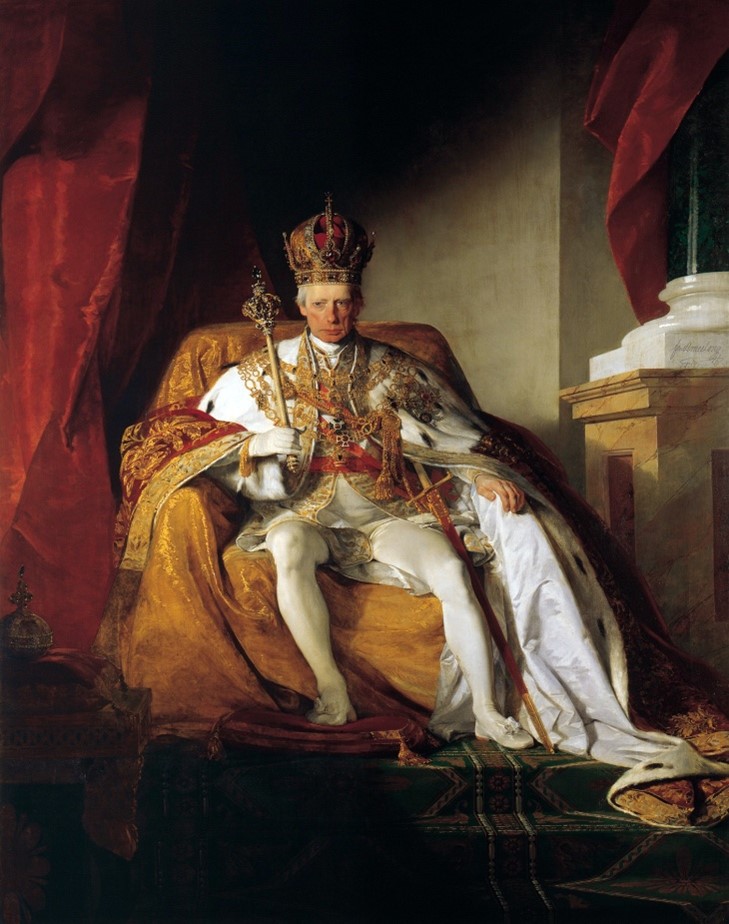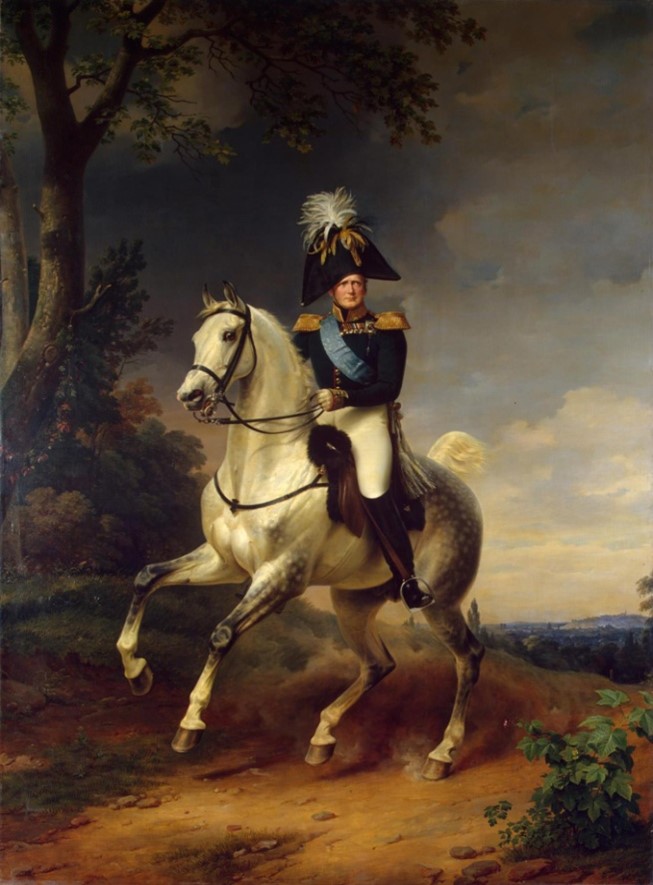

Table of Contents
Originally imagined as a small-scale agrarian rebellion against the oppressive, unlawful rule of Turkish provincial authorities in the Belgrade Pashalik, the First Serbian Uprising soon became an event of great prominence in European diplomacy. A small jacquerie on the northern borders of the once-powerful Ottoman Empire sparked a series of national revolutions among the Christian peoples of the Balkans. After ten years of severe fighting, magnificent victories and cruel defeats, Serbian insurgents finally succumbed in autumn of 1813, after the fall of Belgrade. Regardless of that, after the Uprising, the path to eventual success was traced and the revival of the Serbian national state was only a question of time.
From the very outbreak of the rebellion, its course was inextricably related to the high international politics. That way, the initial accomplishments of Serbian rebels, as well as later struggles and failures pretty much depended on the state of affairs in the ongoing Napoleonic Wars and other current events that involved great European powers. Their interests, relations and internal problems decisively affected the course and results of the First Serbian Uprising.
The Ottoman Empire and Rebellious Serbs
Weakening of the Empire
At the beginning of the 19th century, the old story of the decline of the Ottoman Empire, known in Europe as the Eastern question, was getting to its terminal phase. The choice was between thorough and painful reforms or dissolution. For the old provincial nobility, the answer was clear. They didn’t want to give up on their privileges and abolish misconduct towards their Christian subordinates. The central government was aware of the potential consequences of this opposition, but still felt too weak to resist. At the beginning of the Serbian revolt against the local Muslim nobility (janissaries) and their leaders (Dahi) in February 1804, Sultan Selim III displayed a surprisingly positive attitude towards the rebels. This completely altered during 1805 when rebels launched military strikes against regular Sultan’s troops. After several heavy defeats of once glorious Ottoman armies against poorly armed Serbian soldiers in 1805 and 1806, the weaknesses of the Empire became flagrantly clear.

Sultan Selim III; Oil on Canvas, Konstantin Kapidagli 1803;
Reforms and temporary consolidation
Two basic decisions changed Turkish prospects for victory against Serbs. Above all, the central government (The Porte) finally found the courage to initiate fundamental reforms in Ottoman society. Among other things, the old military order of janissaries was abolished and a new, modernized military organization was put in place. This fact significantly enhanced the strength and readiness of the Ottoman troops in face of the following clashes against Serbs and their new allies – Russians.
Furthermore, this military reform was mostly conducted by the officers of the most powerful army of the time – the French revolutionary army. This strange alliance of an old feudal empire and a new revolutionary one was the second important decision made by the Porte, that proved decisive for the survival of the Ottoman Empire at the dawn of the modern era in Europe. With the great help of the French, who were invading Russia at the time, Turkish troops were finally ready to attack Serbia from all possible directions in 1813. Despite the brave defense, Serbian troops were finally defeated and most of their leaders fled to Austria and Russia, still believing that the struggle for liberty was not over.
French Ideas and French Interests
The French Revolution and Serbs
So far, we have only pointed out the chronological closeness between The French Revolution and the First Serbian Uprising. Was there any other connection between these two events? Historians have already claimed that the Serbian revolt was only one out of many national revolutions ignited by the French example from 1789. This claim calls for an explanation. At first sight, it’s pretty hard to imagine that illiterate serfs of the Belgrade Pashalik would have fought for such abstract ideals as liberty, equality and fraternity. More likely, they were fighting against the brutal state terror for their families and in the name of their people and their faith.
Still, the fact that their ideas weren’t articulated in terms of the philosophy of Enlightenment doesn’t prove their motives were far different. Their Uprising was a rebellion against the oppressive feudal system and their aim was to gain civic liberty and social dignity, as well as to establish a democratic state for the subjugated Serbian people. In practice, their political organization with national assemblies of an old tribal type proved to have much alike with the French Convent. Their fighting was similarly uncompromising against the Old World of nobles and privileges. Finally, amongst at least some of the insurgent leaders, usually Serbs from Austria who joined the Uprising, were schooled men inspired by the French Enlightenment, such as the first Serbian educator Dositej Obradović.
The impact of the Napoleonic Wars
Similarities between the French revolutionaries and Serbian insurgents proved to be insufficient to create close diplomatic relations between the two sides. Political ideas aside, the French Empire of Napoleon Bonaparte soon became a gigantic military superpower, eager to realize imperial interests instead of spreading revolutionary ideas. Having the Russians and Austrians as the fiercest enemies, the French Empire was searching for an ally that could help their offensive ambitions. In 1806, this was finally found in an old enemy, the Ottoman Empire. Thus, if any hope for an alliance with France had ever existed among the Serbs, at this point it vanished. French officers trained and armed the reformed Turkish army and represented Ottoman interests among the European diplomats.

Battle of Borodino, the bloodiest battle during Napoleon’s invasion of Russia; Louis Lejeune, Oil on Canvas, 1812;
Most important of all, they were a dangerous enemy of the Serbian closest ally, Russia. Their offensive against Russia in 1812 turned out to be the last turning point of the First Serbian Uprising. While the French troops were marching towards Moscow, Russians were forced to sign a peace treaty with Turks and leave the area of the Lower Danube. Left alone on the battlefield against modernized Turkish armies supported by French officers, Serbian soldiers stood no chance.
Austria and the opening of the Eastern Question
The old protector of the Ottoman Christians
For centuries, the old Hapsburg Empire, created from the need of various Central European peoples to unite against the Ottoman invasion, was deemed by the Christians of Turkey as the only potential savior from the Ottoman yoke. As early as the 16th century, rebellions of the Serbian population and the Orthodox clergy against the Turks were always carried out in harmony with Austrian military plans. Consequently, Austrian defeats usually paved the way for retaliation and reprisals, as well as huge waves of migrations of the Serbian population from their homeland to Austrian dominions. In the two most significant ones, at the end of the 17th and beginning of the 18th century, more than 200.000 people left their homes and fled to Austria, across the Danube River.
During the last Austro-Turkish war, at the end of the 18th century, Hapsburg troops were once again supplemented by Serbian recruits, among which was the future leader of the Uprising, Karadjordje Petrović. This war was the last example of military cooperation between the Austrians and Serbs. As in previous cases, Austrians retreated and left Serbs alone. Feeling betrayed they felt that was enough. One of the leaders of the volunteers, Aleksa Nenadović bitterly remarked: „Let no Serb trust the German ever again“.
The Serbian revolt and the new Austrian dilemma
Still, at the outbreak of the rebellion, Serbian leaders proved to be aware of the importance of Austria as a traditional source of arms and ammunition but also the only possible trade route. Besides, the rebel leaders couldn’t have stayed indifferent towards Austrian diplomatic interests in the Serbian question. Therefore, from the outset, they were trying to make diplomats of Emperor Francis benevolent towards the Serbs. For various reasons, this turned out to be impossible.

Emperor Francis I of Austria, Oil on Canvas, Friedrich von Amerling, 1832;
The first reason lied in the difficult position Austrians found themselves after many defeats they suffered from the French army in the Napoleonic war. The last thing they wanted was an opening of another front on the opposite side of the country. Consequently, they had to be cautious in their relations with Turkey. Although initially, they opened the border for Serbian trade and armament, year after year new restrictions were being imposed until finally the full closedown was put in order. Besides, Austrians couldn’t be happy about Serbian accomplishments being accompanied by the help of the rivaling Russian Empire. For them, this meant another loss of a longstanding sphere of interest in favor of Russia. Finally, as Archduke Charles pointed out, the revolutionary nature of the Serbian Uprising was to the distaste of the old Monarchy. Moreover, he foresaw a potential danger for the Austrian territorial integrity if this rebellion had attracted the serious attention of the Austrian Serbs.
Russian Empire: the Serbian patron
A Silent support
Throughout the centuries’ long Eastern question, Russians were in the background of this process, leaving precedence to Austria and Venice. In the second half of the 18th century, during the rule of Catherine the Great, this started to change significantly. The last defeat of the Austrian troops against the Turks in the 1790s marked the turning point of passing the championship of the Christian cause in the East from the Hapsburgs to the Russian Tzars. This was the case at the beginning of the Serbian rebellion in 1804.
Aware of the Russian major role in the Eastern question, sending a diplomatic deputation to St. Petersburg was among the first decisions the Serbian leaders (voivode) made in the year 1804. At that point, Russians were fighting Napoleon’s army and their relations with Turkey were mostly peaceful. However, they wanted to show benevolence to a Slavic Orthodox people fighting the infidels. They provided Serbian deputies with certain material support but still wanted to assure themselves of the determination and military might of the insurgents.
The alliance of Serbs and Russia
The proof of Serbian military power came as early as 1805/6. In three major battles, Serbian troops defeated the armies of the Grand Vizier and Bosnian governor. In the winter of 1806/7, Serbian insurgents took a point of the biggest symbolical value, the fortress of Belgrade, the farthest northern bastion of the Ottoman power. For the Russians, this was enough. Temporarily disengaged in the Napoleonic war, they declared war on Turkey and allied with the Serbs.

Equestrian portrait of Alexander I, Oil on Canvas, Franz Kruger, 1837;
Russian assistance was of the biggest value for the insurgents. Together with Russian delegates, they built political and legal institutions of the state and organized a regular army by Russian model. Russian officers and volunteers were fighting side by side with the Serbs. In 1809 they even organized a massive offensive against the Turks that failed as a consequence of the discord among Serbian leaders. The legacy of the previous fighting was saved only with the big help of Russians who launched an offensive on the lower Danube. In fact, a consistent Russian presence in this area proved to be the most significant asset of the Serbian fighting from 1806 to 1812. Over there, the troops of the Tzar Alexander I tied the best military formations of the Ottoman army leaving the Serbian front significantly less burdened. Sadly, after Napoleon launched an offensive on Russian soil, Tzar was forced to pull back the Danube army and leave Serbian soldiers alone against the Turks.

The Liberation of Belgrade, Oil on Canvas, Katarina Ivanović, 1845;
Even though the Bucharest Peace guaranteed autonomy for the Serbs, this didn’t bother Turks too much. From all possible sides, they swarmed up Serbia and defeated the Serbian defense. The Uprising was over! Turkish soldiers (Nizami) were celebrating in the Belgrade Fortress. However, what they didn’t know at the time was that this would be only the first chapter of an irrepressible revolution of the Serbian people.
Further reading
- Leopold von Ranke, A History of Servia and the Serbian Revolution, Cambridge, 2012.
- Dušan T. Bataković, A Balkan-Style French Revolution, The 1804 Serbian Uprising in European Perspective, Balcanica Journal, Issue 36, Belgrade, 2005, pp. 113-128.
- Nedeljko V. Radosavljević, The Serbian Revolution and the Creation of the Modern State: The Beginning of Geopolitical Changes in the Balkan Peninsula in the 19th Century, Empires and Peninsulas: Southeastern Europe between Karlowitz and the Peace of Andrianople, 1699-1829, Berlin LIT Verlag, pp. 171-178.
- Suzana Rajić, Serbia – The Revival of the Nation-state 1804-1829: From Turkish Provinces to Autonomous Principality, Empires and Peninsulas: Southeastern Europe between Karlowitz and the Peace of Andrianople, 1699-1829, Berlin LIT Verlag, pp. 143-148.
- Nebojša Damnjanović, Vladimir Merenik, The First Serbian Uprising and the Restoration of the Serbian State, Historical Museum of Serbia, Gallery of Serbian Academy of Science and Arts, 2004.
- Eric Hobsbawm, The Age of Revolution: Europe 1789-1848, New York, 1962.
- I.T. Berend, History Derailed: Central and Eastern Europe in the Long Nineteenth Century, University of California Press, 2005.
- A. W. Morison, The Revolt of Serbs Against the Turks (1804-1813), Cambridge University Press, 2012.
- Lawrence P. Meriage, The First Serbian Uprising (1804-1813) and the Nineteenth-Century Origins of the Eastern Question, Slavic Review, Issue 37, pp. 421-439.
- Sima Ćirković, The Serbs, Blackwell Publishing, 2004.
- Steven W. Sowards, The Serbian Revolution and the Serbian State, Twenty-Five Lectures on Balkan History, https://staff.lib.msu.edu/sowards/balkan/lecture5.html, 1996.
- Noel Malcolm, The Great Migration of Serbs from Kosovo, Rebels, Believers, Survivors: Studies in the History of the Albanians, Oxford, 2020
- Vladimir Ćorović, Karađorđe i Prvi srpski ustanak, Beograd, 2003.
- Radoš Ljušić, Vožd Karađorđe, Beograd, 1993.
- Vladimir Stojančević, Srbija u vreme prvog ustanka: 1804-1813, Beograd, 1980.
- Slavenko Terzić, Rusija i Srpsko pitanje, Beograd, 2012.
